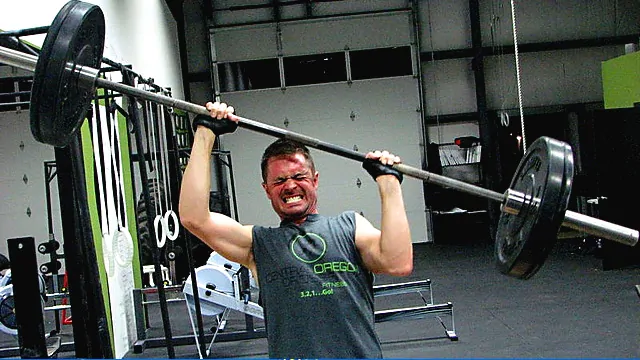
Hello! Can you believe we made it through the holidays, and it's already January? Along with other things, that means there's a whole lot of us who are hitting the gym, either for the first time ever or for the first time in a while.
This is a great thing. Movement and exercise are actually necessities for our bodies to function properly. Keeping a regular, consistent movement-and-exercise routine can really help keep our bodies function better. So I'm always glad when I hear about people getting serious about staying MOBILE.
However, this is also a time when our practice sees a lot of injuries from people doing a little too much, too fast, as they start to live out their New Year's resolutions.
The vast majority of these injuries can be boiled down to two things:
For this first tip, we need to go over a concept called the core cylinder. The basic purpose of our core muscles is to attach our rib cage to our pelvis. This helps to stabilize our spine and protect it when lifting heavy loads.

If you don't stack your rib cage over your pelvis, your low back pays the price. The picture above shows the most common postural fault that I see daily in my practice. This position is called the open scissors position. This position disconnects your rib cage in your pelvis and leaves your low back to do the majority of the work when lifting weights.

So the first step is to learn how to stack your rib cage over your pelvis with an active core. The picture above shows the proper alignment between your pelvis and your rib cage when lifting weights. So before you start any lift, make sure to drop your rib cage into your pelvis so that the two are stacked on top of each other. This will greatly reduce the strain on your low back and reduce injuries when lifting.
The number one lifting injury that I see in my clinic is to the low back. However, the number two injury is shoulder injuries. Many shoulder injuries that result from lifting originate with bad form in upper body exercises.
This can be fixed by putting your shoulder blade in the strongest position possible before starting any upper body lifts. The video above demonstrates the most common non-ideal shoulder positions that many of us commonly utilize.
After showing what poor positioning of the shoulder blade looks like, the video above shows how to properly position your shoulder blades as you prepare for upper body lifts. This position lets the maximum number of muscles contribute to upper body lifts in order to not overload any one muscle in the shoulder.
If you follow these recommendations, you will notice much less shoulder pain when doing upper body exercises
The third most common injury I see with people starting exercise routines is neck and upper back pain. Many of the muscles of the upper body have some connection to the neck and upper back. If the neck is not in an ideal position, lots of injuries can occur when doing upper body exercises.

The picture above shows the common issue many people have with their neck position when doing upper body lifts and exercises. This position really puts the neck and upper back in a vulnerable position and can easily lead to injury. Notice the difference in the position below as the model STACKS his bones correctly.

The picture above shows the proper way to position your neck and upper back before you start any upper body lifts. Position your neck and upper back as you see above and you'll notice much less neck, shoulder, and upper back pain when doing upper body exercises.
So there you have it. Follow these three steps and you will have much fewer issues with injuries when lifting weights in the gym. If you read this blog too late - and you are already dealing with an injury from the gym - give us a call at Movement Laboratory - 918-300-4084 - and let us help you get out of pain and back to seeking those gains in this new year!
